Behind the VFX: Going Back in Time with Most vagy soha! (Now or Never!)
Press Release
April 11, 2024 - Los Angeles/Budapest
The historical Hungarian feature Most vagy soha! (Now or Never!) was released in theaters on March 14, 2024. Set in 1848, Now or Never! tells the story of a young firebrand poet named Sándor Petöfi (Nándor Berettyán) who ignites the Hungarian Revolution with his passionate ”'National Song.” prompting the Austrians to dispatch a ruthless secret agent to assassinate him and suppress the uprising.
From FP Films, Lumiere Film & TV, and Director Balázs Lóth, the film is one of the country's most expensive local productions and Ionart Studios was the main visual effects vendor on this epic historical drama. Led by VFX Supervisor Balázs Drenkovics, we spoke with the team comprised of CG Supervisor Gergely Nagy, CG Lead Artist Sándor Bíró, and Texture Lead Domonkos Kiss about their work in bringing 1848 Hungary to life on the big screen.
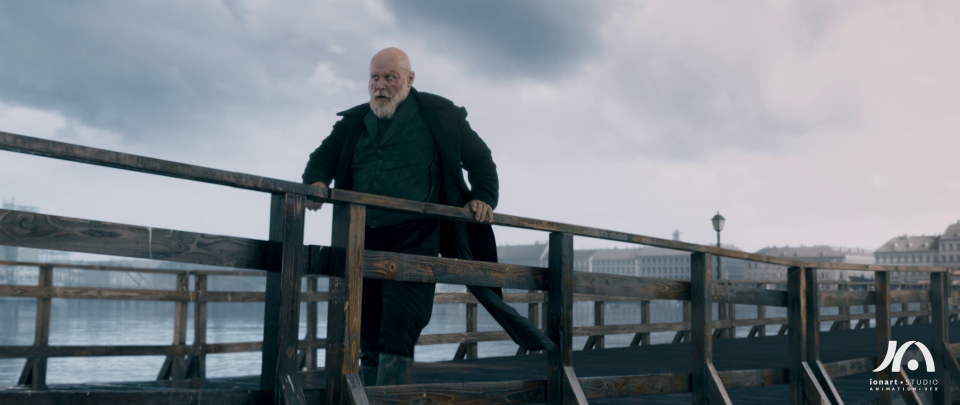
Being a period piece, a large component of the visual effects on Now or Never! was creating the film’s setting. Fresh off the experience of working on the critically acclaimed historical film Semmelweis just last year, the team at Ionart Studios created various CG environments of the cities of Buda and Pest (modern-day Budapest) to establish and extend scenes in the movie. To maintain the accuracy of how the places looked 140 years ago, the team worked with history professors who provided an impressive amount of references, ranging from drawings and illustrations to photographs that the team compiled into Miro boards for internal and external creative collaboration with the production team.
Ionart Studios Miro Board References for 1848 Buda and Pest.
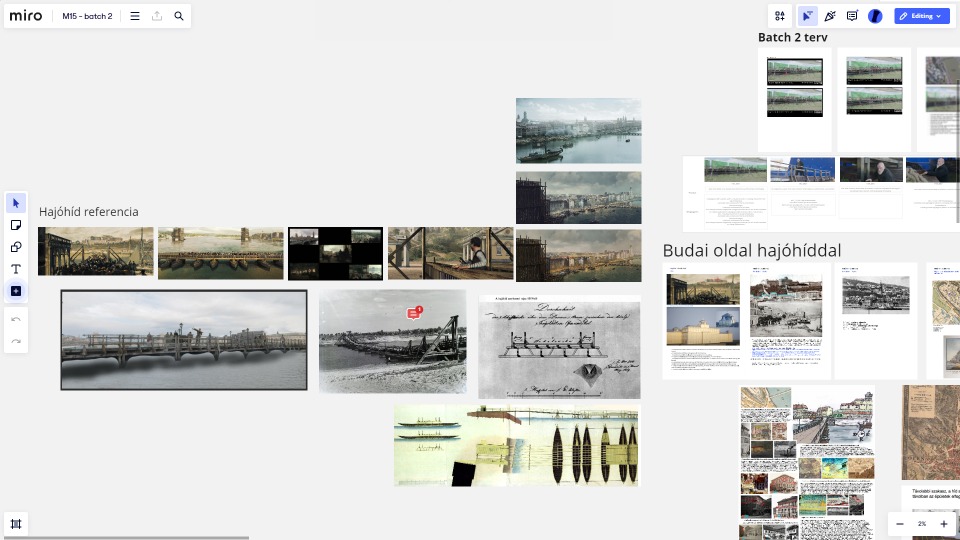
An expansive establishing aerial of the city of Buda on the banks of the iconic Danube River was one of the most complex shots in the film. Sourcing from historical archives, the team put together a detailed recreation of the city along the river, complete with sailing boats and a bustling commercial shoreline complete with animated crowds of thousands of digital actors.
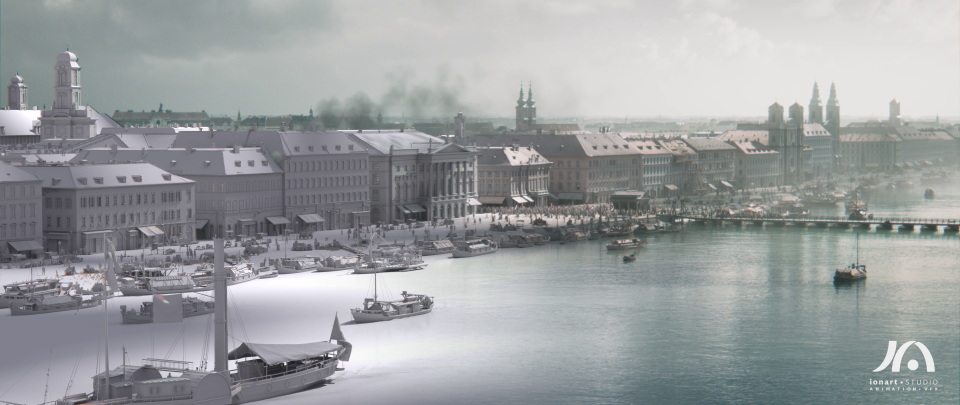
There were many challenges that the team encountered in recreating 1848 Hungary from aerial illustrations. Building proportions weren’t completely accurate in the drawings and were missing key details. According to CG Lead Artist Sándor Bíró, the team had to research, approximate, and build specific architectural details in CG to create the building assets that were propagated into the different scenes. Being a software-agnostic studio, the team utilized a combination of Blender and The Foundry’s Modo to model the assets, and of course, their industry-standard compositing software Nuke was used as the finishing tool of choice. Adobe’s Substance Painter was the base for standardizing the texturing workflow and Texture Lead Domonkos Kiss took advantage of smart materials to maintain the detail and quality level of the textures throughout the project.
“This hero shot is really a testament to how much the team was able to optimize scenes with such a large number of assets because everything just worked,” shared VFX Supervisor Balázs Drenkovics.
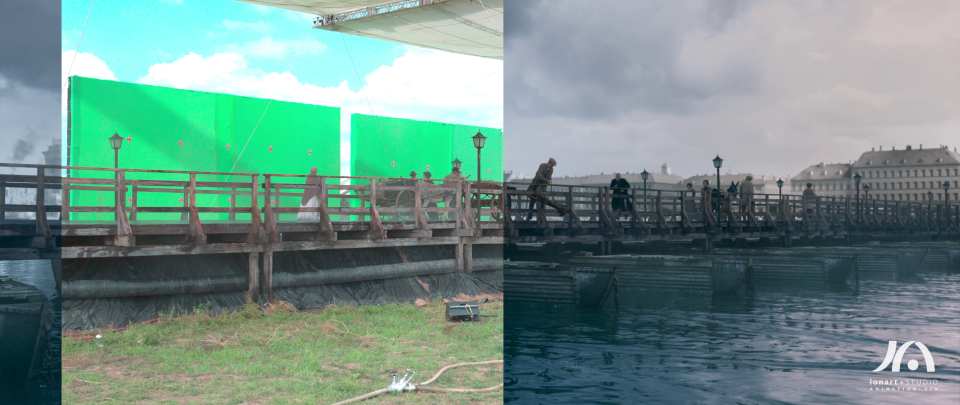
Beyond the wide-establishing shots, the team also worked on numerous street-level sequences where they extended the practical sets using renders of their city builds, water simulations for the river, and additional matte paintings for the distant city and sky to complete various scenes. Due to the major differences between the locations back then and what it looks like in modern-day, very little is often left of the physical set, with most of the shots being mostly composited recreations that define the film’s historical setting.
In addition to the environments, Ionart Studios also took on the complex sequences involving the thousands of protesters in the courtyard of the then-new National Museum. To depict the story of the Hungarian Revolution, the Ionart team utilized 3D characters brought to life with Motion Capture animation shot in-studio and retargeted into the custom characters using SideFX’s KineFX rigging and animation system. The characters were then dispersed into scenes using a customized Houdini crowd system and rendered in either Solaris or Redshift.
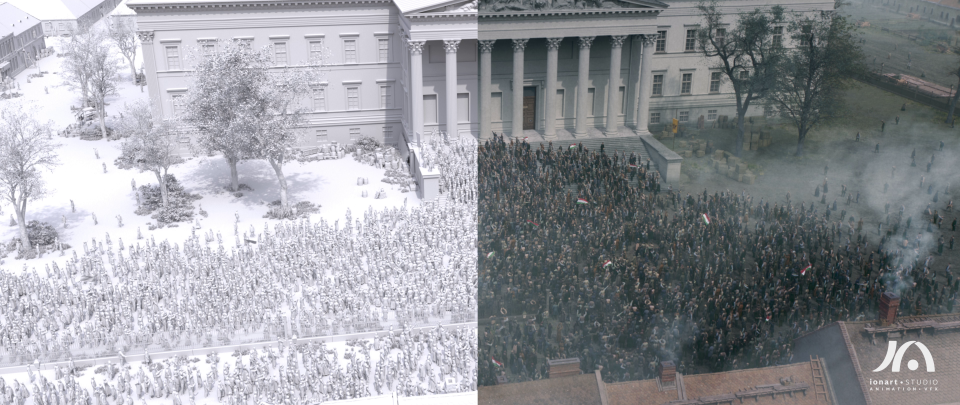
“We created hundreds of motion types and used about 160 actors that were then randomized into different scenes,” VFX Supervisor Balázs Drenkovics explains.
Credit to Editor Krisztián Erdei for putting together the VFX Breakdown.
Overall, creating the visual effects on the film was an exercise in balancing the artistic and historical accuracy of the film’s setting and recalibrating each scene to serve the overall composition of various shots to look great on camera.
The Ionart Studios team would like to thank Lead VFX Artist Máté Birkás who created the crowd system for the film and VFX Production Supervisor Zoltán Benyó for giving great feedback towards finalizing the many shots for the film.
Most vagy soha! (Now or Never!) makes its North American premiere on Sunday, April 14, 2024 at the Laemmle Royal Theater located at 11523 Santa Monica Boulevard in West Los Angeles, California, USA. Director Balázs Lóth, Producer Péter Fülöp, and Lead Actress Sára Mosolygó will participate in a Q&A at the Royal following the screening.